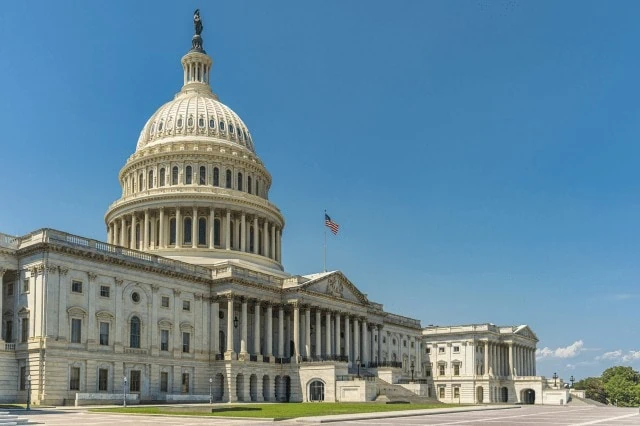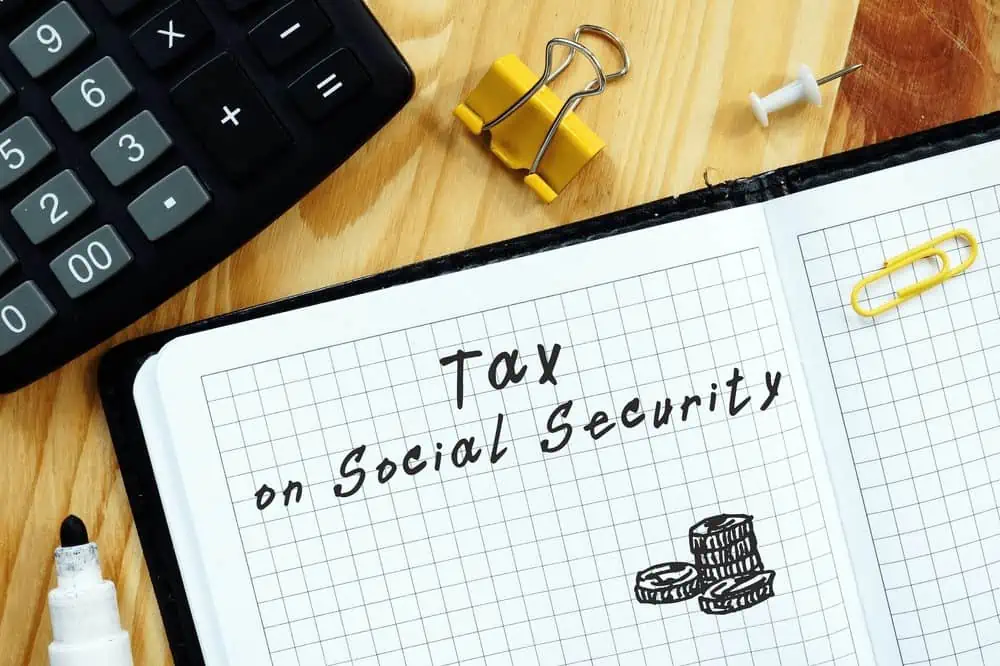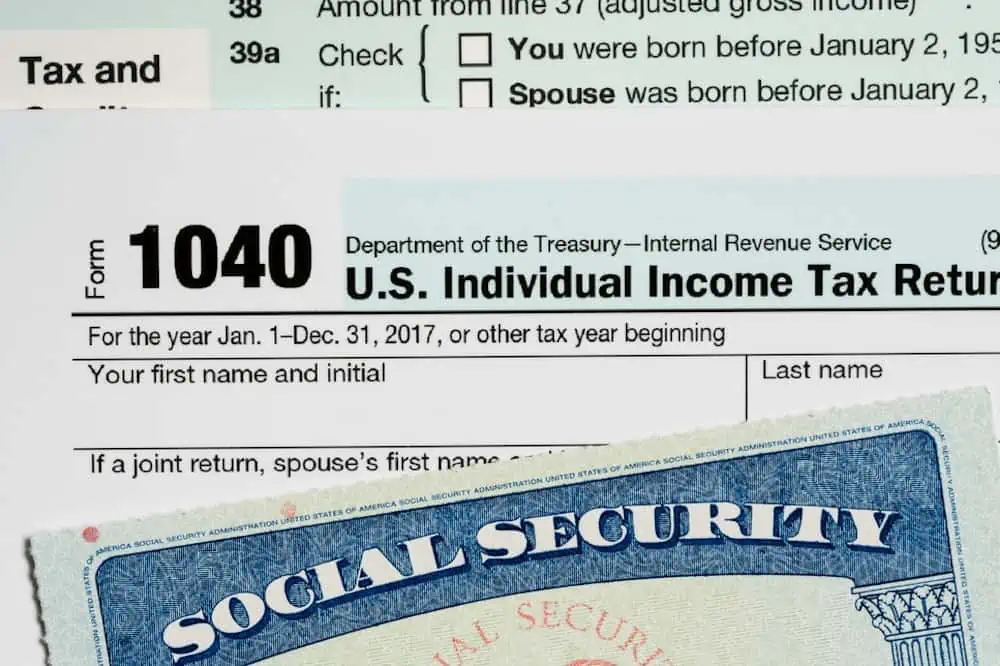Pensions are assuredly down, but they’re not out for the count … yet.
On the whole, Americans’ prospects for retirement are cloudy at best. While Social Security is not actually going “broke,” we are facing the prospect of lower monthly benefits within a decade. More than half of U.S. adults don’t think they’ve saved enough for retirement.
And one of would-be retirees’ most powerful tools—the almighty pension—continues to fade into obscurity. What once was a staple of retirement planning is now, according to the Bureau of Labor Statistics, offered by a mere 15% of private-industry employers.
If there’s a silver lining, it’s that pensions are going, but not gone. While jobs with pensions are much less common than they used to be, they still exist. Today, we’re going to look at 15 such industries where pensions remain a regular benefit.
Featured Financial Products
Table of Contents
What Is a Pension?

Nowadays, the predominant workplace retirement plan is the 401(k)—a defined contribution plan where employees (and sometimes employers) contribute funds that are invested on a tax-advantaged basis to help build a retirement nest egg. How much you end up with in retirement hinges both on how much you and your employer contribute, and how well your investments perform.
Pensions, however, are defined benefit plans—where employers contribute to a large pool of money, which is then invested to grow. That money is eventually used to finance a promised, defined monthly benefit starting when you retire.
As you might imagine, pensions provide workers with the unique advantage of knowing exactly how much benefit they’ll receive once they retire. People with 401(k)s and other retirement plans simply don’t enjoy that level of predictability.
Why Are Pensions Less Common Now?

Companies have become increasingly hesitant to offer traditional pension plans because they’re expensive to administer, and the employer is the one taking on all the investment risk. The employer promises to pay its employees a certain amount, and if it can’t grow its funds enough to provide that payment, it has to make up that difference—usually by contributing even more cash, which can weigh on the company’s finances.
Unsurprisingly, once Congress approved The Revenue Act of 1978, which allowed for 401(k) plans (which pose very little risk to companies), many businesses changed their retirement offers from pensions to 401(k)s.
As a result, American workers face a higher level of difficulty in planning for retirement. Employees must determine how much to contribute to their retirement funds every year. Accounting for market volatility, retirees must carefully calculate how much money they can withdraw each year without bleeding the account dry.
Workers Who Still Have Pensions

The list of jobs that still have pensions might not be large, but it’s a pretty diverse group that ranges from athletes to tradespeople to civil servants.
Here’s a look at the various industries where most people still qualify for defined benefit pension plans.
Sports
We’ll start with sports, where pensions aren’t just hanging around—they’re thriving. Several major sports leagues offer pensions to players, and sometimes even coaches and other staff.
1. Major League Baseball

Major League Baseball was the first of America’s “big four” leagues to offer pensions, starting the practice in 1947, according to ProtectPensions.org. And while it’s called the Major League Baseball Players Pension Plan, the benefit doesn’t just apply to players—it extends to managers, coaches, even trainers.
MLB’s pensions, like many others, are tethered to both term of service—you must work in Major League Baseball for 10 years to receive full benefits—and pay. That said, the IRS mandates how much of any salary can be considered when calculating pension benefits (it’s $345,000 for 2024), so even Shohei Ohtani won’t be privy to a higher benefit than a guy making league minimum.
Related: Best Vanguard Retirement Funds for a 401(k) Plan
2. National Basketball Association

The National Basketball Players Association, established in 1954, is the NBA players’ union—and the reason players receive pensions. After years of work, the NBPA scored a number of financial victories, including the start of a players’ pension plan in 1965.
How much players receive in benefits depends on one’s number of credited seasons; the pension fully vests after three years. A player has to accumulate 10 seasons to earn the maximum benefit. They can start receiving reduced pension benefits at age 45, while 50 is considered the standard retirement age.
It’s also worth noting that many NBA staffers also receive pensions, through a separate plan: the NBA Pension Plan for Coaches, Assistant Coaches and Trainers.
Related: 5 Best Vanguard Retirement Funds [Start Saving in 2024]
3. National Football League Players

The NFL’s pension plan requires a player to either play in the NFL for three seasons. However, they don’t have to play a full season—a player is credited for a season as long as they’re on the team’s roster for at least three games.
Each season represents a credit toward the pension amount—the more seasons a player has under their belt, the higher the pension they earn.
NFL players can take pension benefits with penalty, and at a reduced benefit, prior to age 55. They can do so unpenalized and at full benefit at age 55. And they can delay taking the pension until age 65—the longer the wait, the more their benefit increases.
Interestingly, the NFL once had a mandatory league-wide pension plan for non-playing employees, but in 2009, the league made it voluntary. Now, whether non-playing personnel receive pensions is largely decided on a team-by-team basis.
Related: 5 Best Fidelity Retirement Funds [Low-Cost + Long-Term]
4. National Hockey League

National Hockey League players not only receive a pension—they’re enrolled in the plan the first time they step on the ice. Pension size depends on the number of games accrued during his NHL career. Games keep accruing even if the player is placed on the injury reserve roster or injured non-roster.
National Hockey League players and coaches can receive pensions. Once someone plays their first NHL game, they’re enrolled into the league’s pension plan. The Collective Bargaining Agreement between the National Hockey League Players Association and the NHL details the terms and conditions.
A player must be in the league for at least 10 years and have been on the roster for a minimum of 82 games each season to reach full service. As of the last available data (2022), NHL players could earn a maximum of $255,000 in annual benefits. Players can start receiving reduced benefits as early as age 45; players who wait until age 62 will receive the highest potential payout owed to them.
Related: Best Fidelity Retirement Funds for a 401(k) Plan
Featured Financial Products
5. (Some) College Football Coaches

College football coaches don’t have a collective plan across the NCAA. However, depending on the university at which they work, a college football coach might be offered a pension plan. (Pensions are more typically offered at larger universities with well-known football programs.)
How a coach qualifies for the plan varies by school, but it typically involves working for the university for a minimum number of years. While expensive, it’s an excellent way to attract top talent.
Related: Roth IRA vs. 529 Plan: Which Is Better For College Savings?
Education

Pensions are also commonplace in the education industry. The requirements to qualify for a pension in the education sector vary by state.
Like Young and the Invested’s content? Be sure to follow us.
6. Public School Teachers

Public school teachers have a much lower median annual income compared to most of the other professions on this list, making their retirement benefits an even more essential part of their overall compensation.
Education nonprofit Bellwether, in a 2021 report, said 37 states, as well as the District of Columbia, provided teachers a traditional pension plan as the default retirement choice. (Another 10 states have “hybrid” programs that incorporate features from both defined contribution and defined benefit plans.)
Requirements to qualify for a pension vary by state. How much money teachers receive during retirement usually depends on the number of years of service and a percentage of their salary in the last several years (or just the final year) before retiring. In some cases, plans include cost-of-living adjustments.
Most teacher pension plans are a little outside the norm in that they require both government employers and the members themselves to make contributions. Employer contributions typically come from school districts, but sometimes, they are paid by state legislatures.
Related: 7 Best Value Stocks for 2024 [Smart Picks for the New Year]
7. Public School Principals

Public school principals participate in the same pension plans as teachers. Usually, they use a traditional pension plan formula, which looks at a principal’s years of service and their final salary to determine pension benefits.
When a teacher becomes a principal, their number of years teaching still counts toward the pension—as long as the educator stays in the same retirement system. However, as principals tend to have significantly higher salaries than teachers, the pensions tend to pay out much more.
Related: 12 Best Long-Term Stocks to Buy and Hold Forever
Public Safety

Public safety roles, such as police officers and firefighters, are renowned for the high level of danger. But commonly, they at least enjoy an attractive tradeoff in the form of pension plans.
Like Young and the Invested’s content? Be sure to follow us.
8. Firefighters

Firefighters who have worked a certain number of years typically get a pension plan. This pension usually is funded by contributions from both employer and employee, and administered at a governmental level (such as the state government).
The benefit usually is based on age, years of service, and final average salary, and it may include inflation protection.
This dangerous job often comes with disability and survivor benefits as well.
Related: 9 Monthly Dividend Stocks for Frequent, Regular Income
9. Police Officers

Like with firefighters, there is no national standard, but generally speaking, police officers typically receive a defined benefit plan, like a pension.
Some police forces have a required minimum number of years of service before they can be considered fully vested. Many programs also have a set minimum age that an officer must surpass before retiring to be eligible to receive benefits. While it varies by state, most states require officers to have served at least 20 years to receive a pension, and they usually must reach age 55 before retiring.
Often, the retiree receives half of the base salary of a law enforcement officer at the same location at the time of retirement. Some states might pay out a higher rate if you work additional years.
Related: 12 Best Long-Term Stocks to Buy and Hold Forever
Government

They often say civil service is a thankless job. Perhaps—but at least they’re decently rewarded once that service is over. That is, federal, state, and local government employees usually qualify for a defined benefit pension plan.
Featured Financial Products
10. Federal Employees

All federal employers are automatically enrolled in the Federal Employees Retirement System (FERS). Technically, this isn’t strictly a pension—but it’s a hybrid plan that includes a couple of defined benefit components. The three-tiered plan consists of the following:
— An annuity (defined benefit)
— Social Security (defined benefit)
— The Thrift Savings Plan (TSP), a tax-deferred retirement savings and investment plan (defined contribution)
The plan provides benefits for retirement, disability, and survivors.
To be eligible for the pension/annuity part of FERS, employees must work a minimum of five years with the federal government. For every year they work, workers are eligible for at least 1% of their “High-3 Average Salary History” (the highest average basic pay they earned during any three consecutive years of service).
Automatic deductions from their base pay vary, depending on the type of job and the date of their first Federal appointment.
Related: How to Get Free Stocks for Signing Up: 8 Apps w/Free Shares
11. State + Local Employees

The vast majority of full-time state and local government employees have access to defined benefit pension plans. Their public pensions are especially vital given that state and local workers are one of the few cohorts that often aren’t covered by Social Security. (Social Security coverage for these workers varies by state.)
State and local employee pensions usually are based on the number of years of service and the average salary over a predetermined number of years. Cost-of-living adjustments are common.
Related: The 9 Best ETFs for Beginners
12. Military Service Members

If you are or were a member of a U.S. military branch, you could qualify for one of several military pensions.
Active duty service members with 20 or more years of service can qualify for either the Legacy or High 36 Retirement System, or the Blended Retirement System (BRS).
If you joined the service before Jan. 1, 2006, you’re in the Legacy or High 36 Retirement System. The plan is based on an average of your highest 36 months of basic pay, and the government doesn’t match your contributions to the TSP. If you joined after Dec. 31, 2017, you’re in the BRS, where pension payments are based on an average of your highest 36 months of basic pay, and the government will match up to 4% of your contributions to the Thrift Savings Plan.
Active duty military who joined between Jan. 1, 2006, and Dec. 31, 2017, can choose either plan.
The military also provides a veterans pension for vets who did not retire from the service, and for the survivors of a veteran who served during a war.
Most Union Workers

According to 2023 data from the U.S. Bureau of Labor Statistics, private industry union workers had far more access to pensions and other defined benefit plans than their nonunion counterparts.
— Access to defined benefit plans:
1. Private industry union workers: 66%
2. Private industry nonunion workers: 10%
— Access to defined contribution plans:
1. Private industry union workers: 63%
2. Private industry nonunion workers: 68%
How these pensions function tend to vary by occupational group.
Related: Best Fidelity Retirement Funds for an IRA
13. Registered Nurses

There’s no national standard for nurses and defined benefit plans; nonetheless, many nurses do receive pensions.
One way for registered nurses to earn a pension is to join a nurses union, such as National Nurses United.
Another way is to work for the government. Governmental nursing jobs almost always make a person eligible for a pension. Some private sector nursing jobs—typically with larger employers with hundreds of eligible employees—offer pensions, too.
Related: Best Schwab Funds to Hold in an HSA
14. Electricians

Union electricians belong to a local chapter of a national or international union. And union members can receive pensions if they meet the union’s eligibility requirements.
For example, International Brotherhood of Electrical Workers (IBEW) members can apply for a normal retirement pension if they have five or more years of continuous good standing and are at least 65 years old. Per IBEW:
“The normal retirement pension of an “A” member is a benefit of four dollars and fifty cents ($4.50) per month for each full year of continuous good standing as an “A” member through 2022 and five dollars and fifty cents ($5.50) per month for each year of continuous good standing as an “A” member in and after 2023, computed immediately prior to the month in which benefits begin.”
That said, even if an electrician had 40 years logged with the union, they’d only be able to reap an extra $200 per month. It’s certainly not nothing, but it is a lower benefit than what many other professions’ pensions offer.
Electricians who aren’t in a union—and instead are business owners, work for a business, or are independent contractors—might have no retirement plan or participate in a defined contribution plan.
Related: Best Vanguard Retirement Funds for a 401(k) Plan
15. Plumbers

Plumbers can get access to pension plans from numerous plumbers unions. Pension choices vary by union.
One example is the Plumbers & Pipefitters National Pension Plan. According to plan documents, members must meet the following requirements to participate:
— Be represented by the United Association or a United Association Local Union or District Council and be within a jurisdiction covered by the plan
— One’s employers agreed, in writing, to make contributions on your behalf
— One’s employer is accepted, in writing, as a contributing employer by the Board of Trustees.
The benefit amount partially depends on the amount of pension credit earned under the plan, with a maximum of 35 years of pension credit used in calculations. The pension amount also depends on one’s age. The normal retirement age is considered age 65 or the fifth anniversary of when the person started the plan, whichever is later.
Related: 7 Best Wealth + Net Worth Tracker Apps [View All Your Assets]
Like Young and the Invested’s content? Be sure to follow us.
Related: 11 Ways To Avoid Paying Taxes on Your Social Security

If you’re looking to minimize the tax bite taken out of your Social Security benefits in retirement, you’ve got several available actions to reduce how much you pay each year. We outline several ways to avoid paying taxes on your Social Security benefits.
Related: How Are Social Security Benefits Taxed?

In many cases, Social Security benefits are subject to federal taxation. To learn how your Social Security benefits are taxed, we’ve got an entire guide to walk you through the calculation.
Related: 10 States That Tax Social Security Benefits

While most states don’t subject Social Security benefits to taxation, at least 10 states do tax Social Security. To see if you live in one of them, or you’re considering a relocation for retirement and taxation of your Social Security is a sticking point, we’ve got you covered with all of the details.
Please Don’t Forget to Like, Follow and Comment

Did you find this article helpful? We’d love to hear your thoughts! Leave a comment with the box on the left-hand side of the screen and share your thoughts.
Also, do you want to stay up-to-date on our latest content?
1. Follow us by clicking the [+ Follow] button above,
2. Subscribe to The Weekend Tea, our weekly newsletter to read more about investing, spending, taxes, and more, and
3. Give the article a Thumbs Up on the top-left side of the screen.
4. And lastly, if you think this information would benefit your friends and family, don’t hesitate to share it with them!






